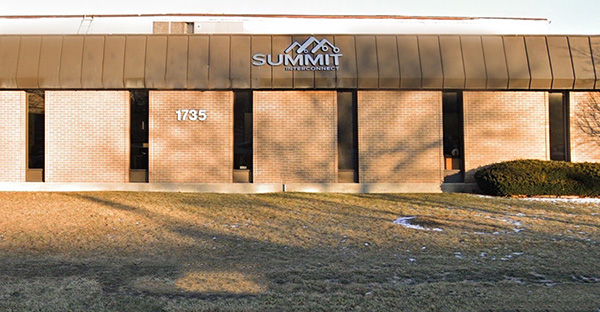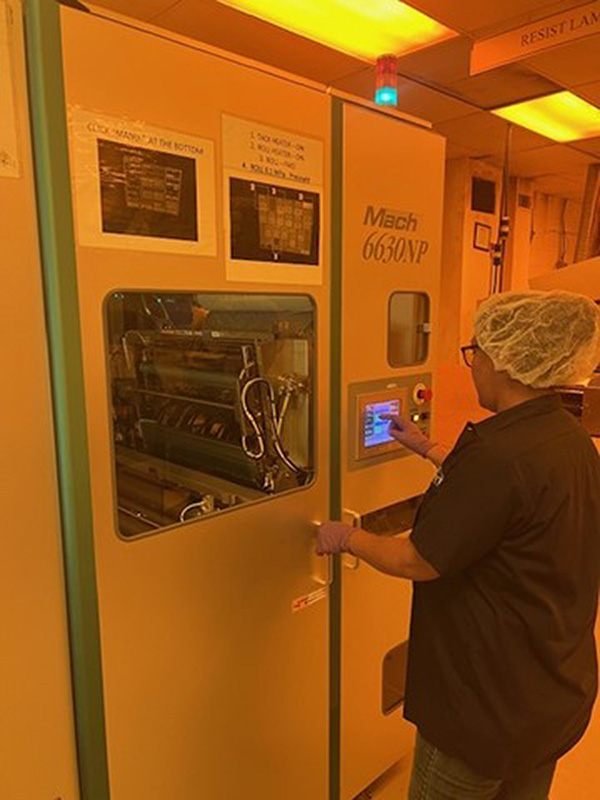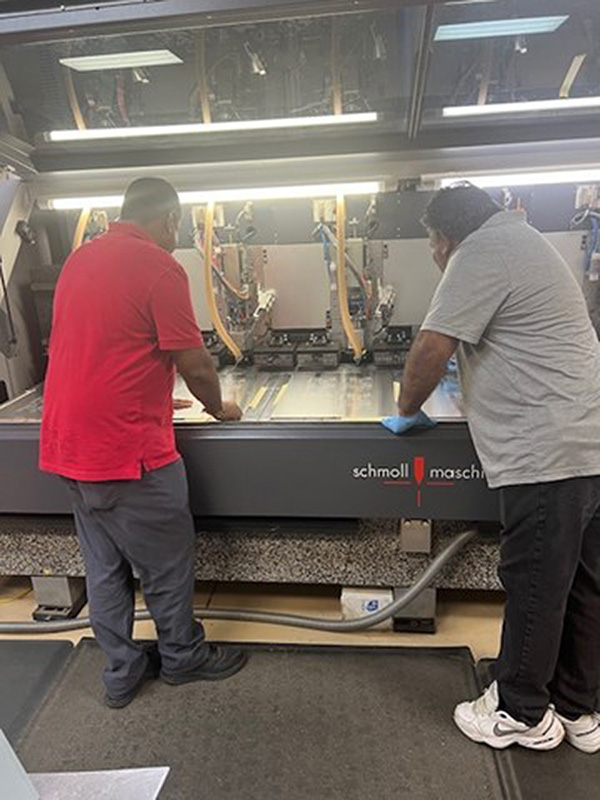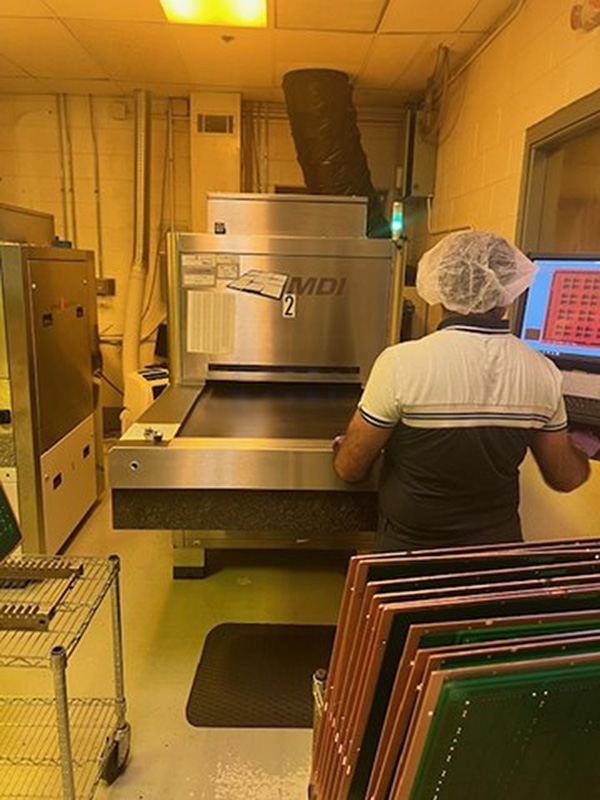Driving PCB Manufacturing Innovation and Efficiency
Can a production fabricator thrive in Middle America? Through its novel automation, Summit’s Chicago plant is proof-positive.
In 1979, Eagle Electronics laid its foundation in printed circuit board manufacturing, and by 1985, it established its current site in Schaumburg, IL, just a few miles from Chicago’s O’Hare Airport. The journey since then has been one of resilience and transformation, a pivotal moment coming in 2001 when the company faced a crucial decision: close its doors, become a broker or remodel. The decision to overhaul operations marked a new chapter, altering workflows to the point where work-in-progress inventory became a rare occurrence.
Now operating as part of Summit Interconnect, which acquired the company in 2021, the Chicago site stands as a key player within an eight-facility network that spans North America, with 90% of its business coming from within the US and additional customers in Malaysia, China and India. Summit Interconnect has positioned itself as a PCB manufacturing powerhouse, with an extensive customer base that spans over 400 businesses, primarily serving the electronics manufacturing services (EMS) sector, which makes up about 70% of its revenue. Quickturn projects, often requiring turnaround times between 24 and 72 hours, and medium-volume production are the site’s specialty.

Figure 1. Summit’s PCB plant in Schaumburg, IL.
The EMS industry saw a surge during the pandemic-induced downturn as manufacturers increased orders in response to a semiconductor shortage. This bubble is now beginning to deflate, with demand leveling off and laminate supplies improving.
“We’re starting to see the effects of that overordering unwind,” says Brett McCoy, vice president and general manager of the Chicago site, when we visited in late July. While Schaumburg primarily focuses on quickturn and medium-sized production lots, it plays a vital role in Summit’s larger strategy. In particular, the Chicago facility works in tandem with the company’s sites in Toronto and Denver, which offer high-volume and assembly prototyping, respectfully. Each location within the Summit network brings unique capabilities, McCoy notes, ensuring customers’ needs are met efficiently, regardless of the project’s complexity or scale.
At the Schaumburg facility, 85-90 employees – ranging from engineers to operators – produce up to 100 panels per project. With 42,000 sq. ft. of production space, the site is equipped to handle a broad range of technologies.
Says McCoy: “Layer count isn’t an issue anymore. We could do 40 layers, but there isn’t demand for that. Most of what we’re seeing now is 2-8 layers.” The Chicago team frequently works on via-in-pad and stacked microvias down to three layers and employs MacDermid’s Eclipse direct metallization for microvias. (All microvias are copper-filled; no epoxy is used.)

Figure 2. A Mach 6630NP lamination machine.
Enhancing Technology and Automation
Summit’s Chicago site has continually adapted to technological advancements, with laser drilling capabilities added about three years ago to handle thin dielectrics. The site’s commitment to innovation is evident with its use of equipment like Orbotech and Schmoll LED for direct imaging, Schmoll MDI TT for solder mask imaging, and multiple Orbotech Fusion AOI, complemented by a range of advanced deburring, coating and printing systems.
The plant layout is unusual for an American PCB fabricator in that it practically matches the process steps in order. McCoy and team’s attention to detail has managed to generate more output from the same footprint over time, and there’s more capacity to be had if needed, he says.
Other lines include two Schmoll MXY CCD drills/routers, with optical cameras capable of +/-50µm features and backdrilling; a Schmoll LIN2 CCD flex router; a Schmoll XRX x-ray drill; a Schmoll Combi UV/CO2 laser drill; and a Schmoll Speedmaster six-spindle drill. Scoring is performed via two Accusystems AccuScore V machines.

Figure 3. Among the many Schmoll lines are ones for drilling and routing …
The site’s robust infrastructure, which includes a six-panel tank system for panel plating and advanced routing and drilling capabilities, permits efficient and high-quality production. This setup gives the flexibility to manage different boards simultaneously, improving throughput and reducing bottlenecks.
Summit Chicago offers an array of finishes including MacDermid immersion silver and OSP, Uyemura ENIG, HASL (SnPb and Pb-free) and gold tabs. It uses an Orbotech Sprint 200 inkjet for printing legends.
The facility’s digital transition started in 2009 and is now fully digital for both inner- and outer-layer and solder mask imaging. Post-etch panels are still used, but the full switch to DIS is imminent. Further investment in tools like MacDermid’s Multibond for multilayer adhesion and TrueChem software for chemical analysis underscores its focus on staying ahead in the competitive PCB landscape.
Operators perform 100% electrical test and visual inspection on all boards built onsite, keeping with McCoy’s goal to avoid “inspect to reject.”
Despite the growing technological demands, McCoy emphasizes that the focus remains practical. “We’re not doing science projects,” he says. “We add technology where it makes sense.”

Figure 4. … and solder mask imaging.
Staffing and Industry Challenges
The workforce at Summit’s Chicago facility reflects the larger challenges facing the PCB industry; namely, finding skilled operators and engineers is increasingly difficult. With two full shifts Monday through Friday and a half shift on Saturdays, the site operates as lean as possible.
“The PCB industry needs more engineers. That could come if (the industry) were more automated and had a cleaner environment,” McCoy suggests, a nod to the growing push for automation within Summit’s operations.
Summit’s attention to operational efficiency and process control is visible in its extensive use of key performance indicators (KPIs). From production throughput to individual operator performance, everything is tracked and analyzed to ensure optimal performance.
McCoy underscores that automation is not just a future goal, but an ongoing process that’s essential to the company’s success. “The issue isn’t so much about the technology decision, but the automation. How do we drive automation and eliminate dependency on activities that require a higher skill level that are harder to develop and train?”
Environmental Stewards
Environmental responsibility is also a priority at Summit. The Schaumburg facility treats 100% of its wastewater onsite and generates its own deionized water. This is part of Summit’s broader commitment to sustainability, with a vision that looks three to five years out (and perhaps a nod to McCoy’s observation about enticing new blood). Capex investments are made with this long-term view in mind, ensuring that the Schaumburg plant – and all of Summit’s locations – are equipped for future industry demands.
The Road Ahead
McCoy is optimistic about the future, noting that initiatives like the Chips Act have provided much-needed support for the US electronics manufacturing sector. “The government is starting to come around,” he says, acknowledging that while it’s a good first step, more must be done to fully realize the potential of the American PCB industry.
As Summit Interconnect Chicago continues to evolve, the site’s integration into Summit’s broader network will be key. With ongoing process developments across its various locations, the company is focused on harmonizing its operations while delivering cutting-edge technology to its customers. The Schaumburg facility will remain a critical part of that strategy, contributing to Summit’s leadership in the PCB industry through a combination of technology, automation and a relentless focus on quality and efficiency.
is president of PCEA; This email address is being protected from spambots. You need JavaScript enabled to view it..




